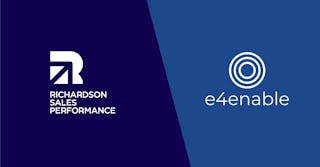Strategies for Crafting Simple & Effective Product Messaging
Customer conversations

Simplified Solutions Sell
However, simplifying the value proposition of a solution has become more difficult in recent years because differentiation is often in the details.
This trend is due to the leveling effect of fast-evolving, affordable technology, which enables a greater number of businesses to access similar resources. As a result, differentiation emerges from the nuanced capabilities that come from pushing the product or service just a little bit further. Consider that in 1977, the average number of words in a patent application was just under 4,000. Today, that figure has increased by 75% to more than 7,000. Articulating the value of those additional 3,000 words has become a challenge as our collective tolerance for detail diminishes.
Selling in this context means finding ways to communicate the differentiated capabilities of the solution and the people behind it with messaging that resonates.
This approach is critical because customers are bombarded with messages daily. Consciously or subconsciously, they filter out the communication that resembles anything that came before. Strong sales professionals differentiate themselves by taking the time to prepare a concise, direct message that resonates without a need for lofty language or industry jargon.
Here we offer three strategies that — when performed in the following order — represent one repeatable method for drafting strong product messaging that can be used throughout the buying journey.
1. Identify the Key Differentiators of the Solution
When examining the differentiated characteristics of a solution, it is important to maintain a wide perspective because true differentiation is about uniqueness relative to the market. A true differentiator is something that competitors cannot do — or cannot do well. A differentiator is a characteristic that is increasingly demanded in the market. These factors, which determine what is truly differentiated, are external to the selling organization. Recognizing this fact is important because understanding the differentiated features in the context of the broader market is what enables sales professionals to defend these components.
To identify the differentiators, sales professionals need to consider the unique characteristics of the solution and the level of value each brings to the customer. It is important to remember that not all differentiators will be meaningful to the customer and if they are not meaningful then they are not a differentiator. These are “nice to have” components that competitors might lack but are not recognized as important in the marketplace. Other solution parts like “core capabilities” are the characteristics competitors have that are seen as valuable by customers but are assumed and necessary to even be considered as a viable purchase. The key is to determine what parts of the solution are both unique and of significant value to the customer. This idea is important at the market level, individual customer level, and even when speaking to key players within a customer’s organization.
A relevant differentiator is one of the most influential elements of a sale. Therefore, it is well worth the time and effort to distill the most unique feature of the solution. This exercise is not always easy. In some cases, the differentiator is not as obvious as a patented technology or a protected piece of intellectual property. Sometimes the differentiator is a capability that is shared among competitors but is considerably faster, more efficient, or more adaptive than the rest. Sometimes the differentiator is not a single feature but instead something holistic. In this case, the unique value is the sum of characteristics offered by the solution, including the people, the product or service, and the support. It is important to remember that core product features become outdated fast due to continuous innovation, whereas extended features like service or support can offer longer-lived opportunities to differentiate.
Download our Differentiation Definition workbook to help you define your solution's unique qualities.
2. Diagnose the Customer's Pain
Knowing the customer’s pain prepares the sales professional to link the differentiated capabilities of the solution to the customer’s needs. Without this link, the sales professional will never be able to articulate value in a customer-centric way.
A customer's pain commonly falls into one of four categories: increasing costs, decreasing revenue, compliance, and missed opportunities. These categories are generalizations.
For example, the pain of decreasing revenue can be vastly different across businesses. Sometimes a drop in revenue is precipitated by external factors, like new competitors entering a market. In other cases, falling revenue might be the result of internal problems associated with supply chain management. It is important to uncover and understand these differences so that the pain is accurately identified and addressed appropriately by the solution.
To understand the details of the customer’s pain, the sales professional must first seek the decision-makers and engage in questioning. Doing so means understanding the difference between a “sponsor” and a “power.” A sponsor is a person in the buying organization who does not have the authority to make a buying decision; however, they can provide access to those who do have purchasing authority and can provide critical information regarding customer needs. In contrast, the power has the capability to buy, negotiate steps leading to a buying decision, and help the sales professional navigate the organization. Success lies in the ability to distinguish these two types.
Creating a dimensional picture of the customer’s pain means speaking to as many of the key players as possible. This step is necessary for two reasons. First, pain is personal and specific to the person and their job. Second, by understanding how individual pains are linked - the “pain chain” - sales professionals can focus their conversation on the thing that is most relevant to each key player.
3. Create a Messaging Snapshot
A solution snapshot combines the differentiated features of a solution and the customer’s pain into a single cohesive story. Creating a messaging snapshot ensures that the communication is focused on the critical business issues of the target audience, and the key capabilities of the solution are emphasized. This method of synthesizing the solution differentiation and the customer’s pain also helps a salesperson build credibility by being able to speak intelligently about what is happening in the customer’s world.
Like any other narrative, a messaging snapshot has a flow in which each part builds on the last in a specific order. This order begins with the sales professional articulating what they have learned about the customer’s primary pain and its impact on various parts of the organization. Next, the sales professional must widen the scope of the message and identify emerging industry trends that might be relevant to this pain. This information sets the stage for the next part: explaining how the solution capabilities address the pain and its underlying causes. This is also where the sales professional has an opportunity to underscore their differentiators. Finally, the sales professional must outline the metrics the customer can observe to know that the pain has been effectively addressed. Doing so often means describing case studies that show how the solution has benefitted other customers in similar positions.
Committing to this specific order of information when delivering solution messaging is important for three reasons. First, it anchors the sales professional to a template that prevents needless information or distractions from getting into the message. Second, this order makes it easy for the customer to follow a clear progression in which each statement leads to the next in a chronological way by describing what happened, what is happening now, and what will happen when the solution is adopted. Third, this structured approach can be adopted across the entire sales organization because it contains no ambiguity.
Selling requires simplified messaging. This necessity of communication is increasingly difficult because the differentiated value of the solution is becoming more nuanced. Overcoming this difficulty means first isolating the defensible differentiators of the solution, then identifying the customer’s pain. With these two pieces of information, the sales professional can draft a clear, concise, chronological solution message that connects the specifics of the customer’s world.

Brief: Selling with Simple, Powerful Messaging
DownloadGet industry insights and stay up to date, subscribe to our newsletter.
Joining our community gives you access to weekly thought leadership to help guide your planning for a training initiative, inform your sales strategy, and most importantly, improve your team's performance.






